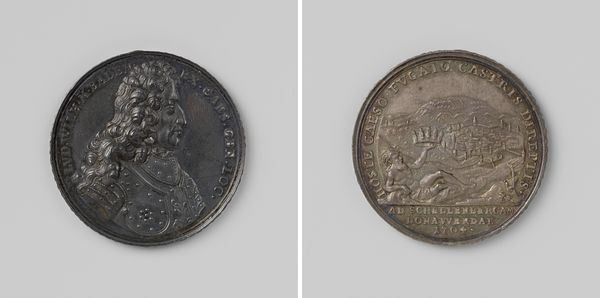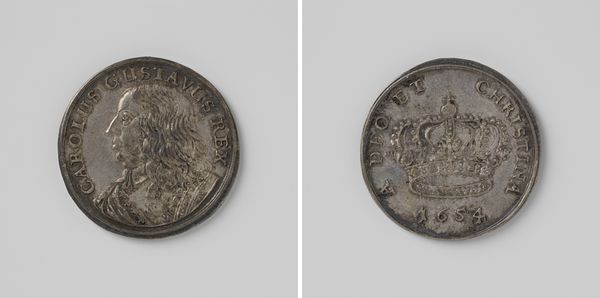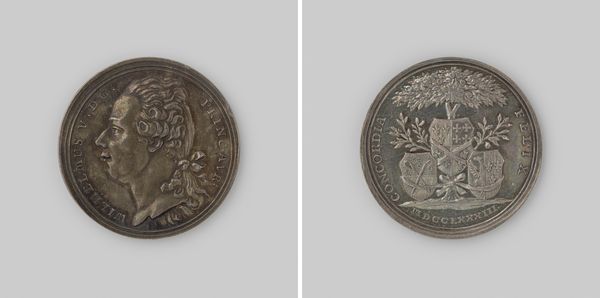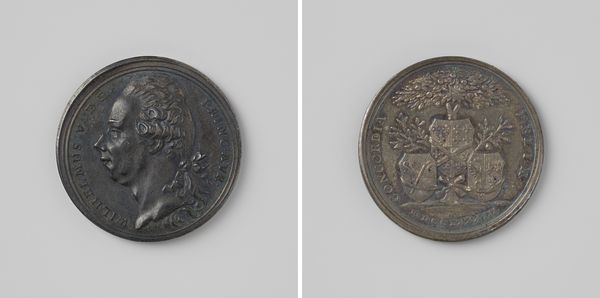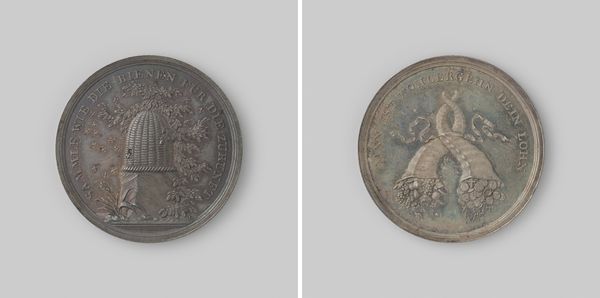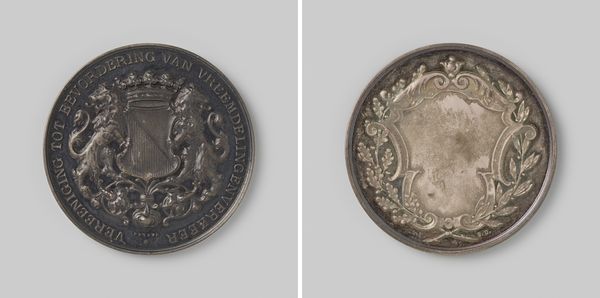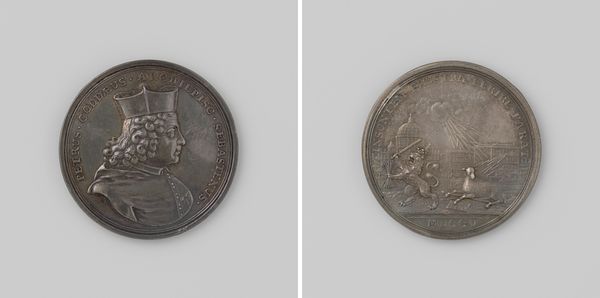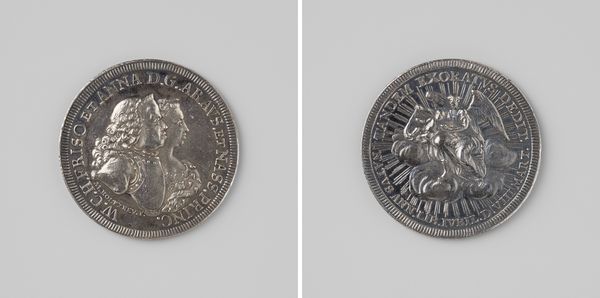
metal, sculpture, engraving
#
baroque
#
metal
#
sculpture
#
sculpture
#
engraving
Dimensions: diameter 3.4 cm, weight 12.93 gr
Copyright: Rijks Museum: Open Domain
Curator: This striking medal, titled "Gelegenheidspenning," dates back to 1742 and it’s been attributed to the artist identified only as Monogrammist WV. What a find to study! What is your initial reaction, Editor? Editor: Austere, even solemn. The metallic sheen adds a sense of gravity. And the details—the engraving—must have taken extraordinary precision. One can't help but wonder about the socio-political backdrop of its creation. Curator: Absolutely, Editor! The piece uses potent visual language. We have an eagle, seemingly descending, with radiant lines emanating from behind it. The imagery immediately brings to mind notions of divine providence and perhaps even imperial power. Editor: Power is certainly the operative word. Medals like these were often commissioned to commemorate events or figures, cementing a certain narrative in the public memory. What specific event might this "Gelegenheidspenning" allude to? Curator: The inscription offers a key clue: on one side is imagery depicting lineage and divine protection. Turn it over and we see what appears to be a stylized family tree bearing the inscription "Gods Plant," invoking the potent symbology of ancestry blessed with divine will. This reads as an invocation of heritage, duty, and even destiny, as if families and individuals are but the sum of their ancestors' labor, struggle, and faith. Editor: This connection between ancestry, faith, and civic duty is deeply resonant. The question is how the elites use religious imagery in ways that affect public policies of the time, specifically concerning families. Do these families carry significant political weight? Is the piece commissioned to celebrate political accomplishments? Curator: Good questions, Editor! The cultural memory embedded in such an object reminds us of the intricate layers of meaning within art, extending far beyond its surface representation. We should think about how images shape collective beliefs over time. Editor: Indeed. It compels me to see the piece as part of a visual dialogue, between those who produce it and those for whom the political message of familial piety resonates at a critical historical juncture. It certainly leaves one wanting to delve deeper into its historical and cultural context!
Comments
No comments
Be the first to comment and join the conversation on the ultimate creative platform.
